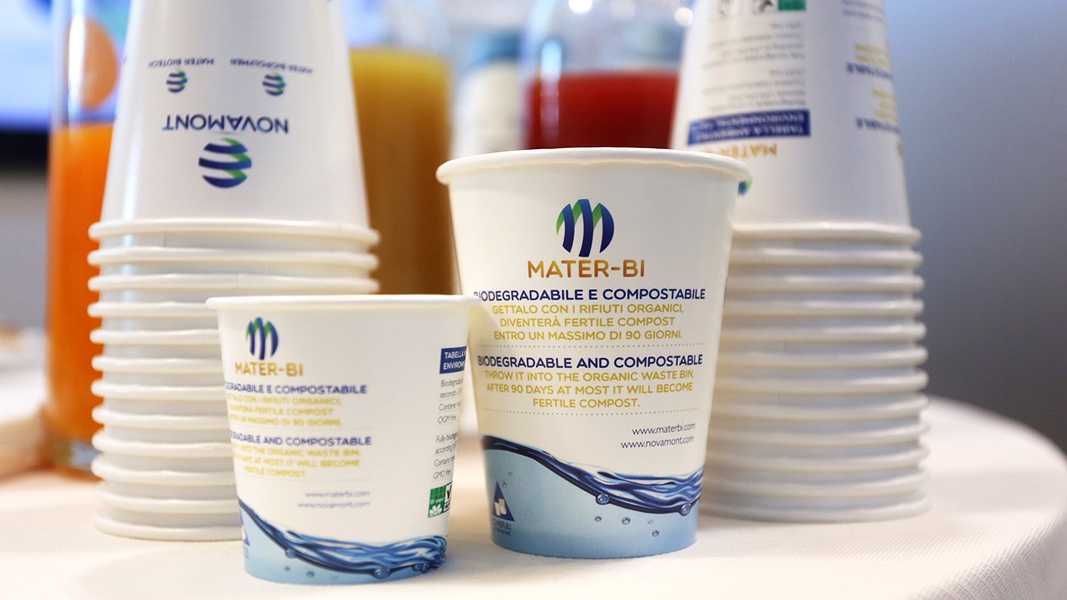Top: Photo courtesy of Novamont
According to a new market research report, “Biodegradable Plastics Market by Type (PLA, Starch Blends, PHA, Biodegradable Polyesters), End Use Industry (Packaging, Consumer Goods, Textile, Agriculture & Horticulture), and Region (APAC, Europe, North America & RoW) — Global Forecast to 2026,” published by MarketsandMarkets™, the global biodegradable plastics market size is projected to grow from USD 7.7 billion in 2021 to USD 23.3 billion by 2026, at a CAGR (compound annual growth rate) of 24.9% between 2021 and 2026. Europe is estimated to be the fastest-growing market for biodegradable plastics between 2021 and 2026, where political and economic conditions have driven the market penetration of biodegradable plastics, according to the report.
MarketsandMarkets defines biodegradable plastics as plastics that undergo biodegradation — “a process in which the degradation results from the action of naturally occurring micro-organisms such as bacteria, fungi, and algae.” The biodegradable plastics market includes both biobased biodegradable plastics and synthetic/petrochemical-based biodegradable plastics. Highlights from a summary of the report include:
- Packaging is one of the end-use industries that dominates the biodegradable plastics market. Thermoset plastics (soy polyurethanes and unsaturated polyester resins) and thermoplastics (PLA, starch blends, PBS, PHA, and cellulose) are the two types of biodegradable plastics mainly used in the packaging industry.
- Key players in this market are BASF (Germany), NatureWorks (US), Total Corbion (Netherlands), Novamont (Italy), Biome Bioplastics (UK), Mitsubishi Chemical Holding Corporation (Japan), Toray Industries (Japan), Plantic Technologies (Australia), Danimer Scientific (US), and Fkur Kunstsoff (Germany).
- PLA is the largest type segment of the biodegradable plastics market, as it is used in various end-use industries such as packaging and bags and consumer goods. PLA is made from renewable resources (e.g., corn starch; tapioca roots, chips, or starch; or sugarcane) and it is compostable as well as biodegradable.
Details about this new report are available from the MarketsandMarkets website.













